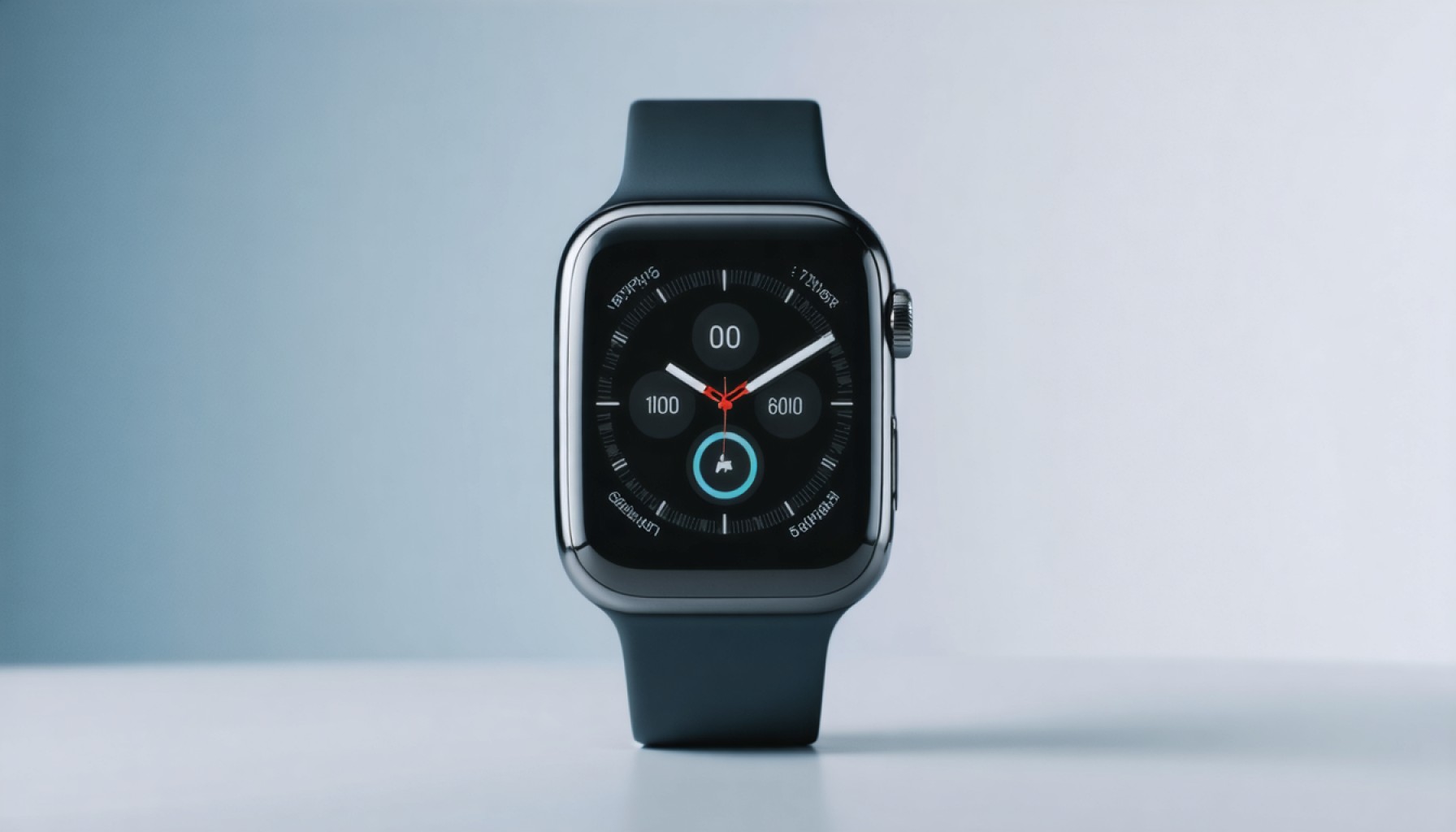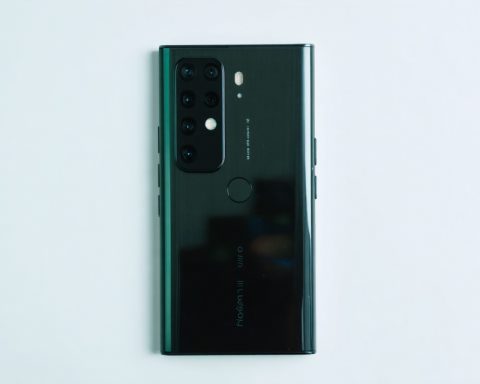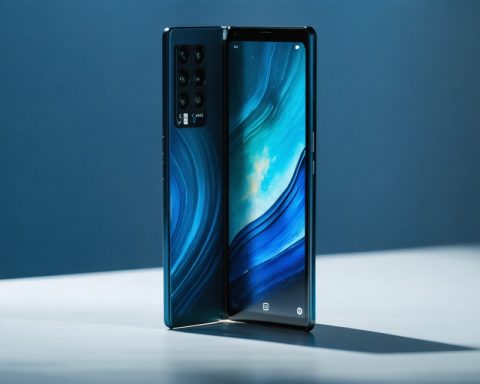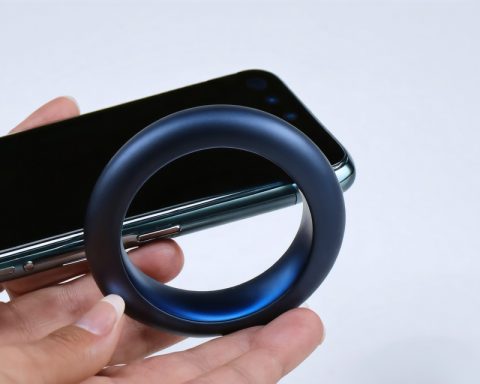- Samsung is set to innovate wearable technology with the upcoming Galaxy Ring, featuring solid-state batteries.
- Solid-state batteries promise enhanced energy density and longevity, potentially extending device life spans two to three times.
- The Galaxy Ring, expected by Q4 2025, aims to eliminate frequent charging interruptions, transforming user convenience.
- Samsung plans to introduce solid-state technology to TWS earbuds by 2026 and smartwatches by Q4 2027.
- This advancement provides better performance for wearables, especially in areas like sleep tracking and health monitoring.
- The integration of solid-state batteries could render charging breaks a thing of the past, enhancing device autonomy.
- Samsung’s focus is on creating a seamless tech experience, making devices reliable and integral parts of daily life.
In a world where wearable technology races forward with relentless innovation, Samsung stands poised on the brink of a transformative leap. The whisper of its next-gen Galaxy Ring reverberates through tech circles, promising not just an upgrade, but a genuine revolution in the power source fueling our digital lifestyles. Imagine, if you will, a ring that almost effortlessly tracks your every move, and a battery that defies the constraints of yesterday.
Enter the age of solid-state batteries. Samsung’s pioneering efforts to integrate this cutting-edge technology into its wearables like the Galaxy Ring could redefine endurance and efficiency. Solid-state batteries aren’t merely an improvement; they herald an energy transformation with their potent density and longevity. Such batteries could potentially double, even triple, the life span of our digital companions, creating a seamless experience devoid of frequent charging interruptions.
According to credible industry insights, the next iteration of the Galaxy Ring is expected to debut with this revolutionary solid-state battery as soon as Q4 2025. For too long, battery life has confined the vast potential of wearable devices, particularly in areas such as sleep tracking, where extended monitoring can provide richer, more accurate data. Samsung’s bold step is not just about enhancing convenience; it’s about expanding the horizon of what wearables can achieve in our lives.
But Samsung’s audacity doesn’t halt at the Galaxy Ring. This power-packed techno-marvel is just the beginning. By 2026, the technology is speculated to extend to TWS earbuds, and smartwatches are expected to follow suit by Q4 2027. Imagine earbuds and watches that last longer, perform better, and allow no compromise on sound quality or health-tracking capabilities.
For those entrenched in the tech-savvy culture, this news is a beacon of excitement. The ordinary boundaries of device autonomy are about to crumble, paving the way for an era where technology serves us tirelessly without the constant demand of recharging. Energy breaks that currently sideline devices like the Samsung Galaxy Watch, which struggles to last 30 hours on a single charge, will increasingly become a relic of the past.
As Samsung continues its quest for that quintessential battery, users stand on the threshold of newfound independence from the charger. With a potential leap in technology this significant, new possibilities will undoubtedly unfold, all powered by the brilliance of a solid-state revolution.
In this race for technological advancement, Samsung has thrown down the gauntlet. It’s no longer about chasing the newest widget or whiz-bang feature—it’s about redefining reliability, efficiency, and most importantly, the way these gadgets integrate into our daily lives, practically disappearing into the fabric of life itself. With each charged moment, Samsung is not just powering devices, it’s igniting a future where technology serves as a seamless extension of ourselves. Get ready, the future of wearables is here, and it promises to be more connected and enduring than ever before.
Samsung Galaxy Ring and the Future of Wearable Battery Technology
In an era where wearable technology is continuously evolving, one company, Samsung, is preparing to revolutionize this space with a groundbreaking innovation: the Galaxy Ring powered by solid-state batteries. This leap in battery technology is poised to redefine the lifespan and efficiency of wearables, offering users longer usage times and enhanced performance. Here’s an in-depth look at what this means for the future of wearables and how consumers can prepare for these exciting advancements.
Understanding Solid-State Batteries
What Are Solid-State Batteries?
Solid-state batteries represent a significant departure from traditional lithium-ion batteries. They replace the liquid or gel electrolyte with a solid, thereby enhancing energy density, safety, and battery longevity. This change allows devices to have:
1. Higher Energy Capacity: These batteries can store more energy, which equates to longer periods between charges.
2. Increased Safety: The solid electrolyte is less prone to leaking and is more stable at higher temperatures, reducing the risk of overheating and fires.
3. Longer Lifespan: Solid-state technology can potentially extend the lifecycle of batteries, making devices last longer.
Pros and Cons of Samsung’s Solid-State Adoption
Pros:
– Extended Battery Life: Expect wearables that need infrequent charging. For instance, Galaxy Ring’s solid-state battery could support weeks of usage without requiring a recharge.
– Compact Design: Solid-state batteries allow for slimmer, more ergonomic designs, enhancing wearer comfort.
– Reliable Performance: Consistent power delivery can improve the performance of sensors and processors in devices, enhancing functionalities like health monitoring and connectivity.
Cons:
– Cost: Initial costs may be higher due to the complexity and novelty of solid-state battery technology.
– Manufacturing Challenges: Scaling production to meet demand without compromising quality can be complex.
– Initial Market Availability: Early adopters may face shortages as initial production ramps up.
Anticipated Launch and Market Trends
Launch Timeline
Samsung plans to introduce the Galaxy Ring with solid-state batteries by Q4 2025, with TWS earbuds following in 2026 and smartwatches by Q4 2027. This gradual rollout indicates a strategic approach to integrating solid-state technology across its product lines.
Industry Trends
As Samsung leads the charge, other manufacturers are likely to follow, intensifying the competition in the wearable market. This development could lead to more innovation, better pricing, and options for consumers across various brands and devices.
Real-World Use Cases
– Healthcare Monitoring: Longer battery life enhances continuous monitoring features, offering more reliable data for health tracking.
– Fitness Tracking: Extended operation supports features such as GPS tracking for outdoor activities and detailed activity logs.
– Lifestyle Integration: Wearables can better integrate into daily life without constant recharging interruptions.
Actionable Tips for Consumers
– Stay Informed: Follow tech news and updates from Samsung to catch early release and pre-order opportunities.
– Budget Planning: Anticipate a higher initial investment but consider long-term savings from less frequent device replacements and charging needs.
– Evaluate Your Needs: Prioritize features that benefit most from extended battery life, such as health monitoring or fitness tracking, when deciding on a purchase.
Conclusion
Samsung’s foray into solid-state batteries heralds a new era for wearable technology, promising extended lifespans and improved performance for devices like the Galaxy Ring. As this technology becomes mainstream, users can expect wearables to become an even more seamless part of their daily lives. Embrace this advancement by preparing for longer-lasting, more efficient, and highly integrated tech experiences.
For more information on the latest technological advancements and updates, visit Samsung.

















